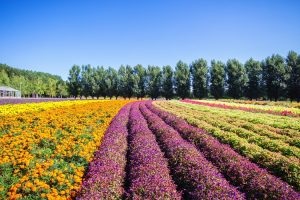BY TSEGAYE TILAHUN
As part of its green legacy initiative, Ethiopia has successfully accomplished 2020 fiscal year’s plant seedling campaign by planting more than five billion seedlings. And it is working to plant 20 billion seedlings within four years to help build a climate resilient economy.
Ethiopia’s is making a systemic shift towards integrating nature-based solutions into adapting to climate change. The country is committed to creating a climate-resilient green economy to reduce greenhouse gas emissions and to safeguard economic growth as well as adaptation strategy to lessen the vulnerability to the effect of climate change.
Currently, climate change and disaster risks losing nature’s capacity to regulate fundamental water, climate and other life support systems on earth. Government’s commitment to advance mainstreaming, ensure the ecosystem based on adaptation especially finding nature based solutions, are considered as a means for sustainable development of climate resilient recovery and development.
On Sunday, addressing the Climate Ambition Summit 2020 about the commemoration of the fifth anniversary of Paris Agreement, Prime Minister Abiy Ahmed said that Ethiopia has taken bold leadership on climate action by launching its ambitious climate resilient green economy strategy that aspires to build a carbon neutral and resilient economy by 2030.
The country’s effort towards green economy development is vital to reduce its high vulnerability to climate change as well as environmental degradation. It has been working to reduce the widespread environmental degradation in various corners which is disrupting ecosystem services. Soil erosion and land degradation are the largest challenges faced in maintaining soil fertility and productivity of agriculture.
Climate change needs to build resilience. Therefore, it is urgent and important to take up nature based solutions to adapt to climate change. The nature based solutions designed to address the co-vulnerabilities of nature are more important.
Ecosystem based adaptation can help restore and protect economically important ecosystems, and generates both direct and indirect employment such as planting, monitoring, developing nurseries, supplying seedlings, tourism, timber and non-timber forest products.
Ethiopia’s effort to realize its green development and climate resilient agenda at policy and implementation levels is amazing. The country has made several commitments at policy level such as development of a climate resilient green economic strategy to address the adverse effects of climate change by building a greener and more resilient economy.
In 2019, the country launched the Green Legacy Initiative to prevent the impacts of climate change, an ambitious undertaking to become a green society by planting various types of eco-friendly trees to combat environmental degradation, with the goal of planting 20 billion trees over four years and aiming to restore about 15 million hectares of forest. The efforts to adapt to climate change and prepare to build back better; it needs to seek an environmentally sustainable development pathway.
Taking climate action to a new level of ambition together with the agreement is scaling up climate action across the country. Boosting renewable energy, adapting carbon free transport and protecting and restoring nature will enable the building of a green economy. Nowadays, there is a global movement for climate action. The movement that needs counts on powerful nations, but also on countless cities, NGOs and people’s good will.
According to Abiy, the country is extremely aware of the immense challenge of the impact of climate change. We represent those at the front line of the impacts of climate change despite contributing to the least to cause this crisis.
The Green Legacy Initiative is more than cutting emissions. It is about green finance and restoring biodiversity. And also it is about a new circular economy that creates jobs and prosperity while preserving nature. Many things have to change, so that the planet can remain the same for the next generation.
Over the last years, the green legacy strategy has been fully mainstreamed into the recently launched 10 years perspective development plan which runs 2021 to 2030. As part of our commitment to the Paris Agreement, we have also launched our fifteen years ambitious national adaptation plan aimed at reducing the vulnerability of the country to the adverse impacts of climate change. This plan has identified 18 options across the most vulnerable sectors including agriculture, forestry, health and transport, Abiy added.
“We have also recently intensified our commitment in the fight against climate change by launching a green legacy national flagship initiative in 2019 aimed at planting 20 billion seedlings within four years. During the last two years, we have managed to plant more than nine billion tree seedlings.”
As of next year, the government is working to extend the green legacy initiative into neighboring countries. Ethiopia is also on the verge of finalizing the process of updating its nationally determined contribution as well as the preparation of the 2050 long term low carbon development strategy despite the challenge posed by COVID-19.
He reiterated unwavering commitment of Ethiopia in the global fight against climate change and called up on all parties to enhance their ambition and scale up their climate financial support for developing countries.
“Five years after Paris, we are still not going in the right direction” UN Secretary-General António Guterres alerted at the opening of the Climate Ambition Summit. Making a call for a global coalition for carbon neutrality by mid-century and 45 percent cuts to greenhouse (GHG) emissions by 2030 below 1990 levels, he commended leaders coming forward with new targets. And he urged all stakeholders to adopt net-zero pledges and begin implementing them now.
At the climate ambition summit, countries agreed for zero emissions commitments, and 20 new adaptation and resilience plans. Several countries and financial institutions made new climate finance-related pledges including the United Kingdom, which pledged to double its climate finance contribution to USD 15.5 billion over the next five years and the European Investment Bank, which announced a goal of 50 percent of investments going toward the climate and environment sectors by 2025.
China’s commitment to lower its carbon dioxide emissions per unit of GDP by over 65 percent from 2005 levels by 2030 and the EU’s commitment to reduce GHG emissions by at least 55 percent by 2030. Numerous countries announced or affirmed their commitment to reaching net-zero carbon dioxide or GHG emissions by mid-century.
Many vulnerable countries stressed the importance of continuing financial and technical support to enable their contributions to emissions reduction and building resilience.
According to documents, Ethiopia is vulnerable to the impacts of climate change and the unpredictability of climate variability. The country’s adaptive capacity is constrained by limited livelihood options for the majority of the population, inadequate ability to withstand or absorb disasters and the prevailing biophysical shocks it faces. To address these challenges, the green legacy initiative has been taken as a solution to reduce the vulnerability.
The government adopted a Climate Resilient Green Economy strategy to move action on climate change adaptation and address the impacts of climate change. The current efforts will be supported to mitigate droughts, floods and cross-cutting interventions.
The Ethiopian herald December 17/2020





